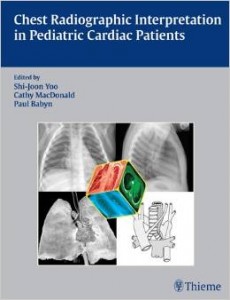-87%
Advancements in Neonatal Imaging: Techniques and Applications
In the realm of pediatric radiology, advancements in neonatal imaging have revolutionized our ability to evaluate and manage the unique medical conditions of newborns. This comprehensive article delves into the intricate world of neonatal imaging, providing an in-depth understanding of techniques, findings, and emerging technologies that shape the field.
Review of Neonatal Imaging Techniques and Findings
Neonatal imaging plays a crucial role in diagnosing and monitoring a wide spectrum of conditions in preterm and full-term infants. Various imaging modalities offer unique perspectives, providing valuable information about the anatomy, physiology, and underlying pathology of the neonate.
Chest and Cardiac Imaging
Chest imaging techniques, such as X-ray, ultrasound, and computed tomography (CT), enable the evaluation of the lungs, heart, and mediastinum. These modalities help identify congenital heart defects, respiratory distress syndrome, and other pulmonary abnormalities.
Musculoskeletal Imaging
Musculoskeletal imaging, primarily through X-ray and ultrasound, examines the bones, joints, and muscles. It plays a pivotal role in diagnosing fractures, dislocations, and other orthopedic conditions in neonates.
Body Imaging
Body imaging techniques, including ultrasound, CT, and magnetic resonance imaging (MRI), provide comprehensive assessments of the abdomen, pelvis, and other organs. These modalities are crucial for detecting gastrointestinal anomalies, urinary tract malformations, and other systemic conditions.
Neuro Imaging
Neuroimaging, particularly MRI and ultrasound, is essential for evaluating the developing brain. It aids in diagnosing congenital malformations, perinatal injuries, and neurodevelopmental disorders.
Genitourinary Imaging
Genitourinary imaging, using ultrasound and occasionally CT, assesses the kidneys, bladder, and genitalia. These techniques help identify structural anomalies, urinary reflux, and other genitourinary conditions.
Optimization of Imaging Techniques in Neonatal Imaging
Optimizing imaging techniques in neonatal imaging is paramount to ensure accurate diagnoses and minimize radiation exposure. Here are some key considerations:
Ultrasound
Utilizing high-frequency transducers and specialized imaging techniques, such as Doppler and elastography, enhances the sensitivity and specificity of ultrasound in neonatal imaging.
Radiation Reduction
Minimizing radiation exposure is crucial, particularly in preterm infants. Techniques like shielding, dose-saving protocols, and the judicious use of CT and X-ray are employed to reduce radiation burden.
Advanced Techniques
Novel imaging techniques, such as contrast-enhanced ultrasound and ultrahigh-field MRI, offer improved image quality and enable the detection of subtle abnormalities.
Emerging Imaging Techniques in Neonatal Imaging
Ongoing advances in imaging technology are continuously expanding the capabilities of neonatal imaging. Here are some emerging techniques that hold significant promise:
Contrast-Enhanced Ultrasound
Contrast agents used in ultrasound enhance the visualization of blood flow and tissue characteristics, aiding in the diagnosis of cardiovascular anomalies and other conditions.
Advanced MRI Techniques
Diffusion tensor imaging, tractography, and quantitative MRI provide detailed insights into brain development and connectivity, supporting the early identification of neurodevelopmental disorders.
Artificial Intelligence (AI)
AI algorithms are being integrated into neonatal imaging, enabling automated image analysis, reducing interpretation time, and enhancing diagnostic accuracy.
Conclusion
Neonatal imaging has emerged as a vital tool in the evaluation and management of newborns. Through a comprehensive understanding of imaging techniques, findings, and emerging technologies, clinicians can optimize image quality, minimize radiation exposure, and harness the potential of advanced imaging modalities. As the field continues to evolve, it holds the promise of further enhancing our ability to diagnose and treat a wide range of neonatal conditions.










Reviews
Clear filtersThere are no reviews yet.